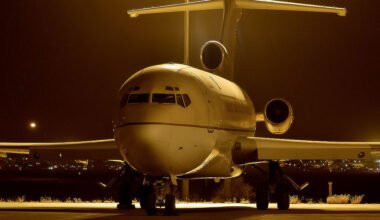History of Airbus A321
The A320 family continued with its new member Airbus A321. Soon after, A320 formally joined the service. The launching date of Airbus A321 is more or less around the same timelines. The A321 was officially launched on 24 November 1988. After making its maiden flights in 1993, Lufthansa was the first airline that operated the A321 in 1994. In fact, Lufthansa and Alitalia were the first customers to book the A321 when A320 entered the service. The A321 is also the largest variant of the A320 family.

Read more:- Airbus A320 – The Game Changer (Part -I)
What is Special about A321?
The A321 is primarily the derivative of the A320. To be more simplistic, A320 is the baseline for all the members of the A320 family. The A321 is the ‘Stretched’ version of the A320 with more capacity due to increased length and engines with more thrust. The aircraft comes in two variants as the A321-100 and A321-200. Unlike its elder brother A320 manufactured in France, the A321 was assembled in Hamburg, Germany. It also turned out to be a profitable aircraft for Airbus in terms of its business expansion.
Type Rating
The aircraft shares a common type rating with all other Airbus A320-family variants, allowing previous A320-family pilots to fly the aircraft without further training. American Airlines is the largest operator of the A321 aircraft.

Seating Features
The A321 generally operates in twin classes; Business Class and Economy Class. Due to its role in transatlantic routes, business class is necessary to cater the corporate and niche clients. In addition to the business class seats, the seat design of some of the economy class seats is such that provisions have been given to have seats with more legroom. A typical layout of an A321 is as follows:-

Variants of Airbus A321
Airbus A321-100
The original derivative of the A321, the A321-100, has a lesser range than the A320. This variant also has a lesser range than the A321-200. An extra fuel tank was not added to the initial design to compensate for the extra weight. The A321-100 entered service with Lufthansa in 1994. Only 90 of these variants were produced.
Airbus A321-200
Airbus launched the heavier and longer-range A321-200 in 1995. The A321-200, which also operates for transatlantic flights, has a range of 5100 km. The reason for the increased range is an additional fuel tank added in this particular variant. Compared to its older version, the A321-200 has twin engines but with higher thrust, minor structural strengthening, and increased fuel capacity with the installation of one or two optional 2,990-litre tanks in the rear underfloor hold. These are some of the prominent differences between the two variants.
Read more: Airbus a name to reckon with
Airbus A321 Operator in Pakistan
Airblue is the only operator of A321 in Pakistan. The airline is already pursuing the procurement of the A321neo, which is a much more fuel-efficient aircraft than the A321 CEO. As a reminder to the new readers, the A321 CEO ‘Current Engine Option’ is the older version of the A321. The A321neo is the ‘New Engine Option’ with design modifications in the wingtips and higher thrust engines.

Read more:- Airbus Commercial Aircraft Division
There is more to it!
Lesser Carbon Footprints and Reduced Noise Levels
The A320 family is growing every day, and new aircraft and aerial vehicles are on their way to the aviation industry. At present, the reduction in carbon footprints and noise levels is a major area of focus and concern for global aviation manufacturers. All the new structural and engine designs are now being materialized to support the sustainability of the endangered environment. Airbus is following the same lead.
Written by guest writer, Faisal Bashir




